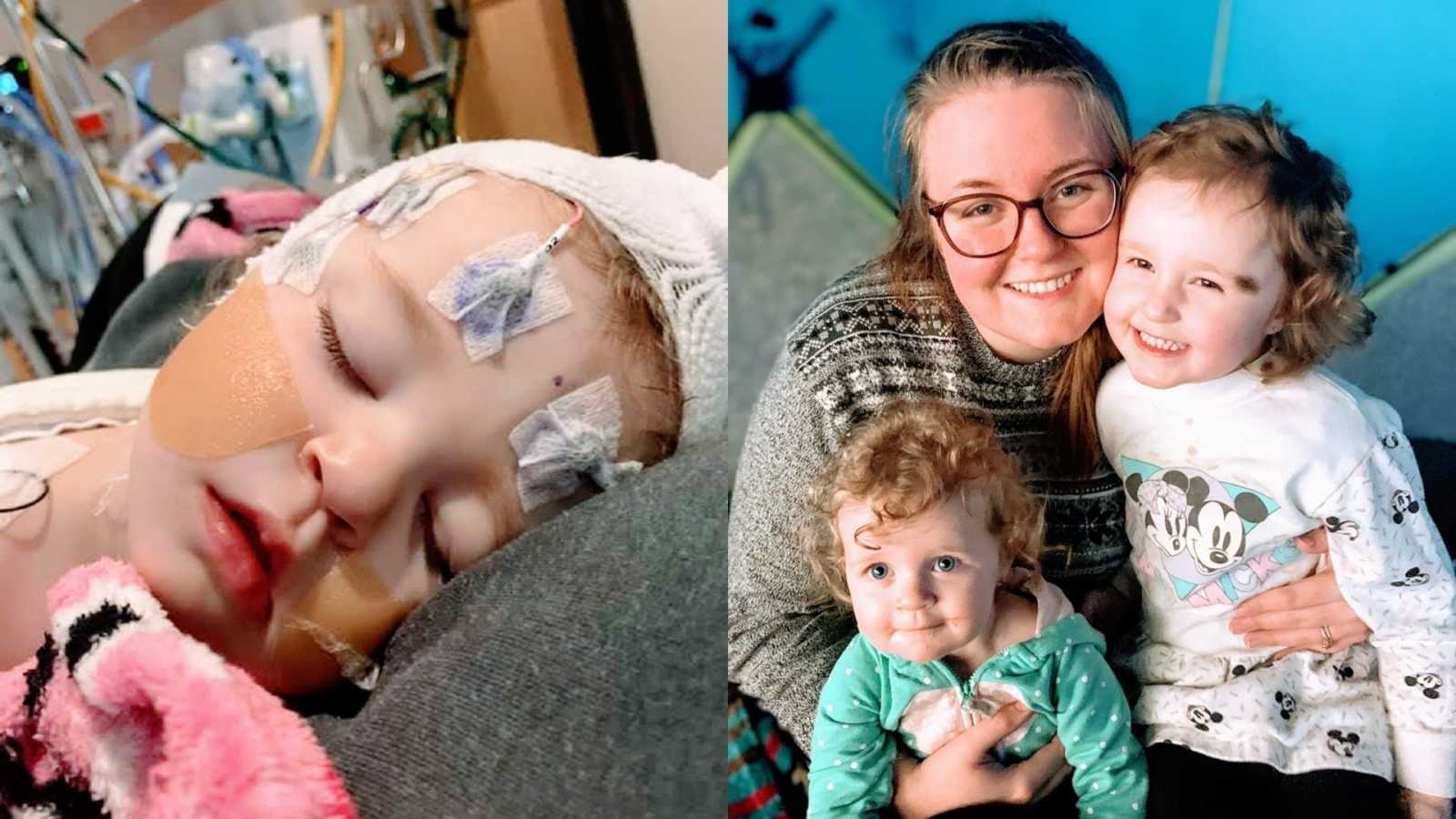“My husband, Kyle, and I met and fell in love in Salt Lake City while attending college. We married, and not long after, our daughter, Aurie, was born in 2017. We had our second daughter, Andie, in the fall of 2019, right before COVID hit.
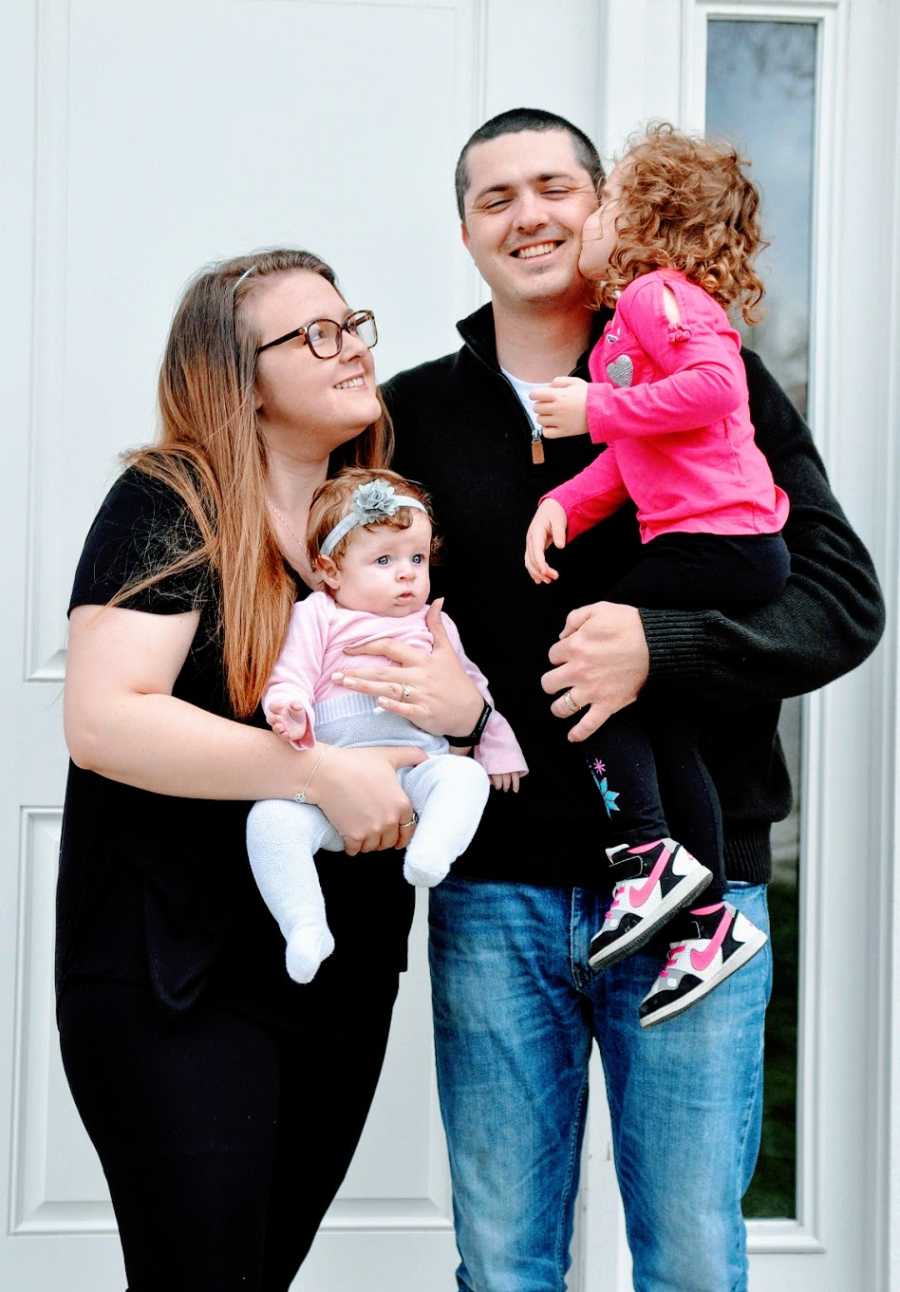
Our daughters had a special connection from the very beginning. There wasn’t a moment Aurie wasn’t asking to hold her baby sister. She loved trying to swaddle Andie and hold her before watching her favorite shows.
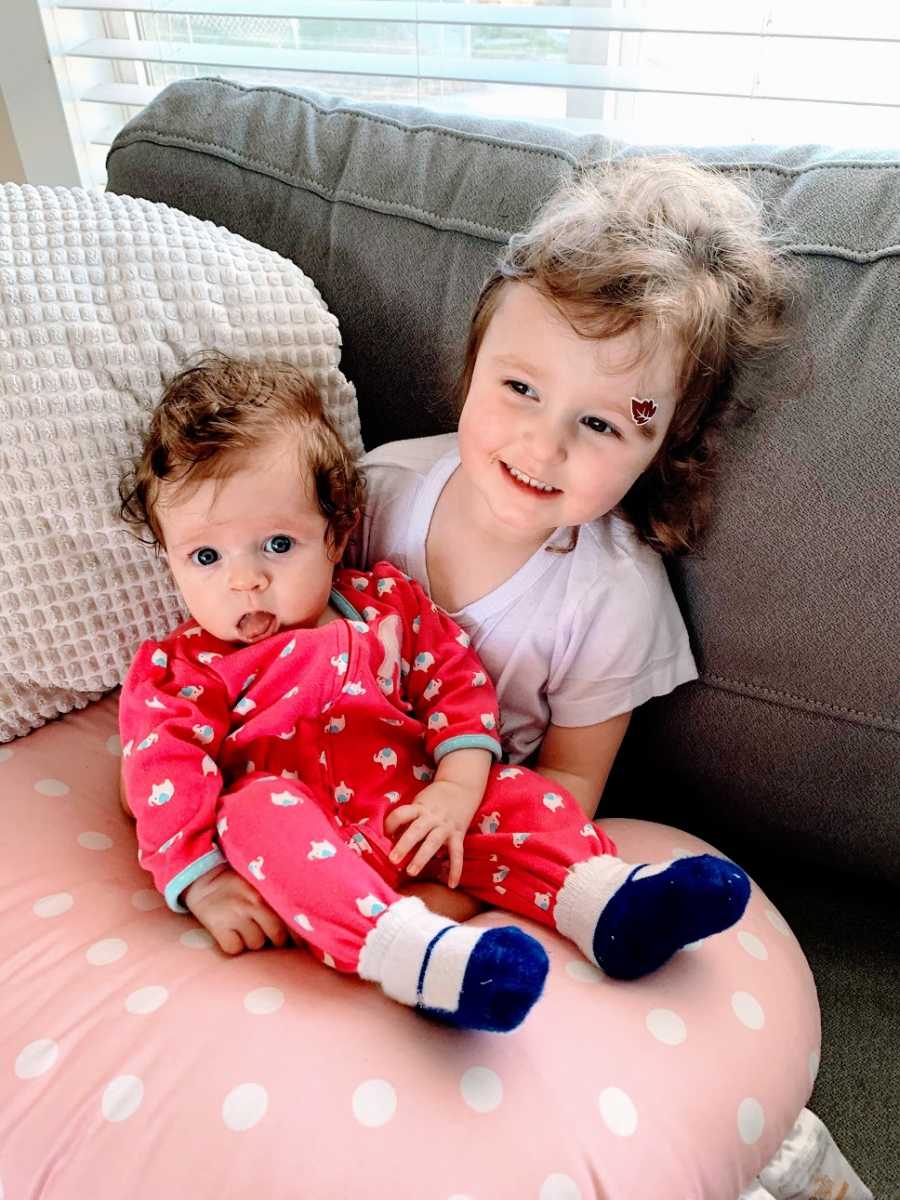
We brought Andie in for her 4-month-old check-up and found out she was on the small side, but perfectly healthy. The next morning, Kyle had woken up with the baby to let me sleep in. That morning, everything changed.
It wasn’t long before I woke to my husband at my bedside holding our daughter. ‘Lexie! I’m not sure what is happening, but Andie is acting strange. Will you look at her?’ It took me a moment, but I soon saw what my husband was talking about. Our baby’s left arm and leg were rhythmically jerking. Her eyes were open and seemed to be looking up at my husband.
We had no idea what was happening, so we made a Facetime call to my mom, who is a pediatric nurse. My mom told us she was having a seizure and asked how long it had been going. When we told her it had been 3 minutes already, she told us, ‘Call 911!’
By the time EMS arrived, Andie had stopped convulsing. Because she showed no sign of seizure, they told us it was likely a febrile seizure, which can be common in small children. Kyle and I noticed the side where Andie’s small body had been convulsing was no longer responsive.
‘It looks like her left arm and leg have gone limp. What should we do?’ I asked. The paramedics instructed us to call Andie’s doctor and schedule an appointment for later that day. When our pediatrician heard Andie’s limbs were limp, we were told to take her to the emergency room immediately.
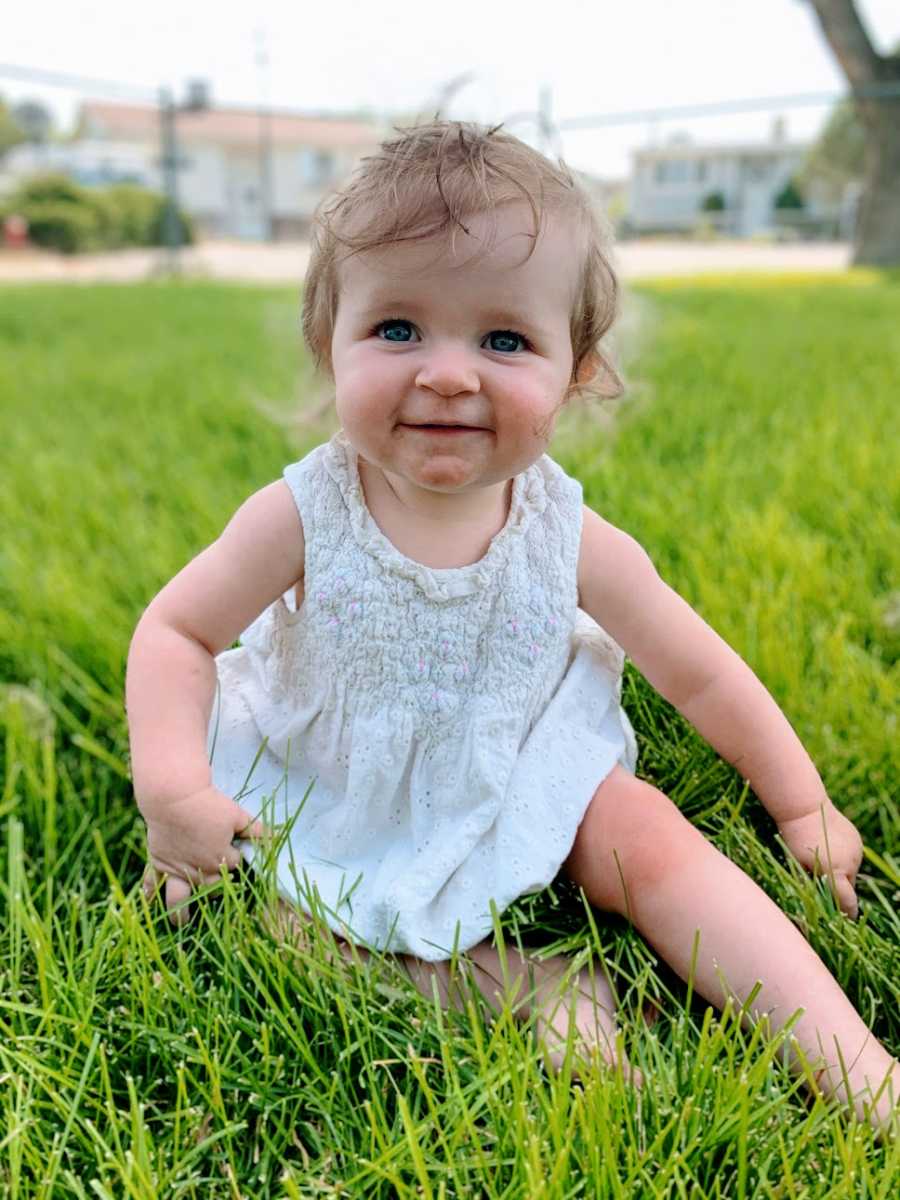
We rushed to the nearest children’s hospital. While in the waiting room, something didn’t look right. Terrified, I called out for help. We were rushed back and a flood of doctors and nurses came into the room. We learned Andie had not stopped seizing but had continued without convulsions. After an hour, the doctors were finally able to get the seizing to stop.
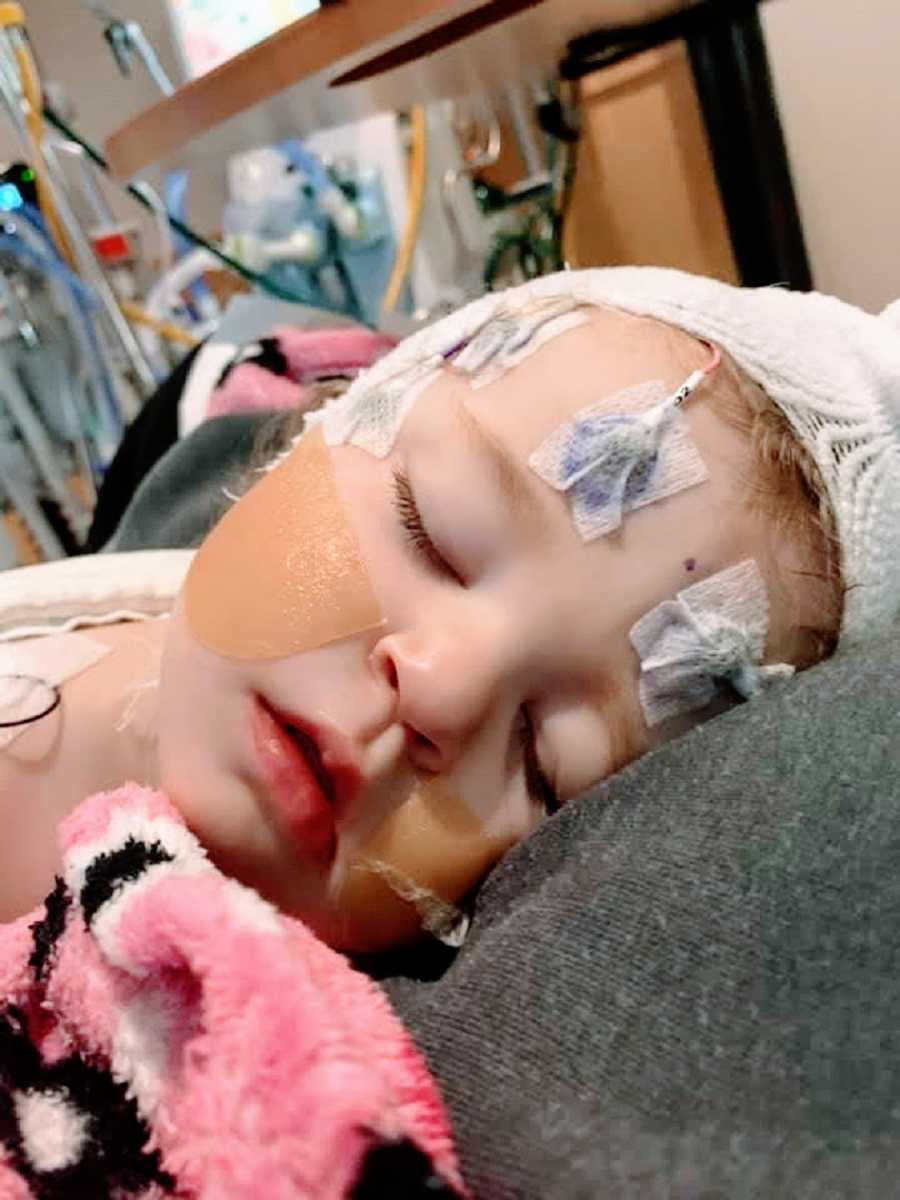
We learned it is uncommon for seizures to last longer than a few minutes. After many tests and scans, we were informed Andie had a rare genetic disorder called Dravet Syndrome. Dravet Syndrome is a life-long genetic disorder consisting of frequent, prolonged seizures that are difficult to treat.
Seizures are not the only issue presented by this rare disorder. Children with Dravet also have difficulty eating, sleeping, and walking. They often are diagnosed with learning and developmental disabilities and require early intervention such as physical, occupational, and speech therapies. Kyle and I were devastated when we learned 1 in 5 of these children pass away before adulthood.
In a matter of minutes, the vision of what we thought our future held shattered. The following months were filled with seizures, hospitalizations, failed medications, and our baby being poked and prodded. Her longest seizure has lasted over 5 hours. We have seen our baby boarded on a helicopter, sedated, and intubated. She has been through more in her short life than most adults.

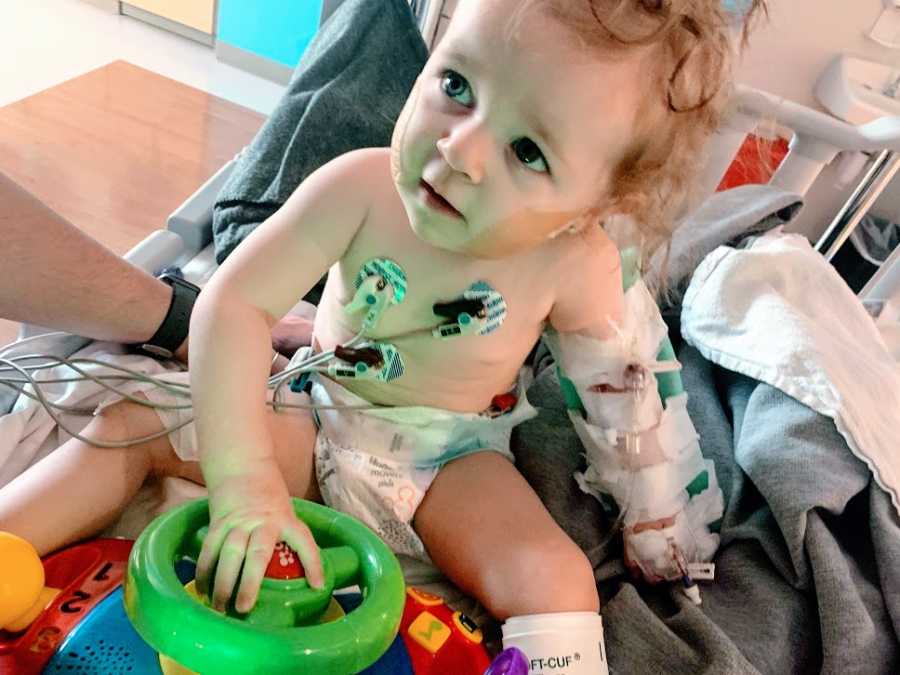
Although we loved living nestled in the Rocky Mountains, we knew we couldn’t stay. There wasn’t a doctor that specialized in Dravet within 350 miles of where we lived. We decided to move to Houston, Texas. It was where I was raised and where my parents still lived. We would have lots of support and have access to a world-renowned medical center and a Dravet Specialist.
We quickly learned not all seizures look the same. When this all began, Kyle and I knew nothing about epilepsy or seizures. We only knew what we had seen in the movies: full-body convulsions, eyes rolled back, foaming at the mouth. That is not what Andie’s seizures look like.
The first seizure Andie ever had was a hemiclonic seizure. This is where muscles rhythmically contract and relax on one side of the body. Andie actually has more than one type of seizure. She also has myoclonic seizures. These seizures are brief and usually happen throughout the day. Her head will momentarily drop, seeming like she is losing consciousness, but quickly come back up and resume her activity.
The last seizure type Andie has is absence seizures. When Andie has seizures like this, she will slowly fall down and look like she is staring into space, and after a few minutes, her eyebrows and lips will tremble.
I firmly believe that even though Andie is unresponsive in her seizures, she can still hear me and feel my presence. Andie’s seizures have never been predictable, and they usually happen while my husband is at work. In the beginning, I would panic. My hands would shake uncontrollably, and I would usually cry. I was frantic as I tried to get her medication ready and call 911. This induced unnecessary anxiety in Aurie. I realized I needed to change.
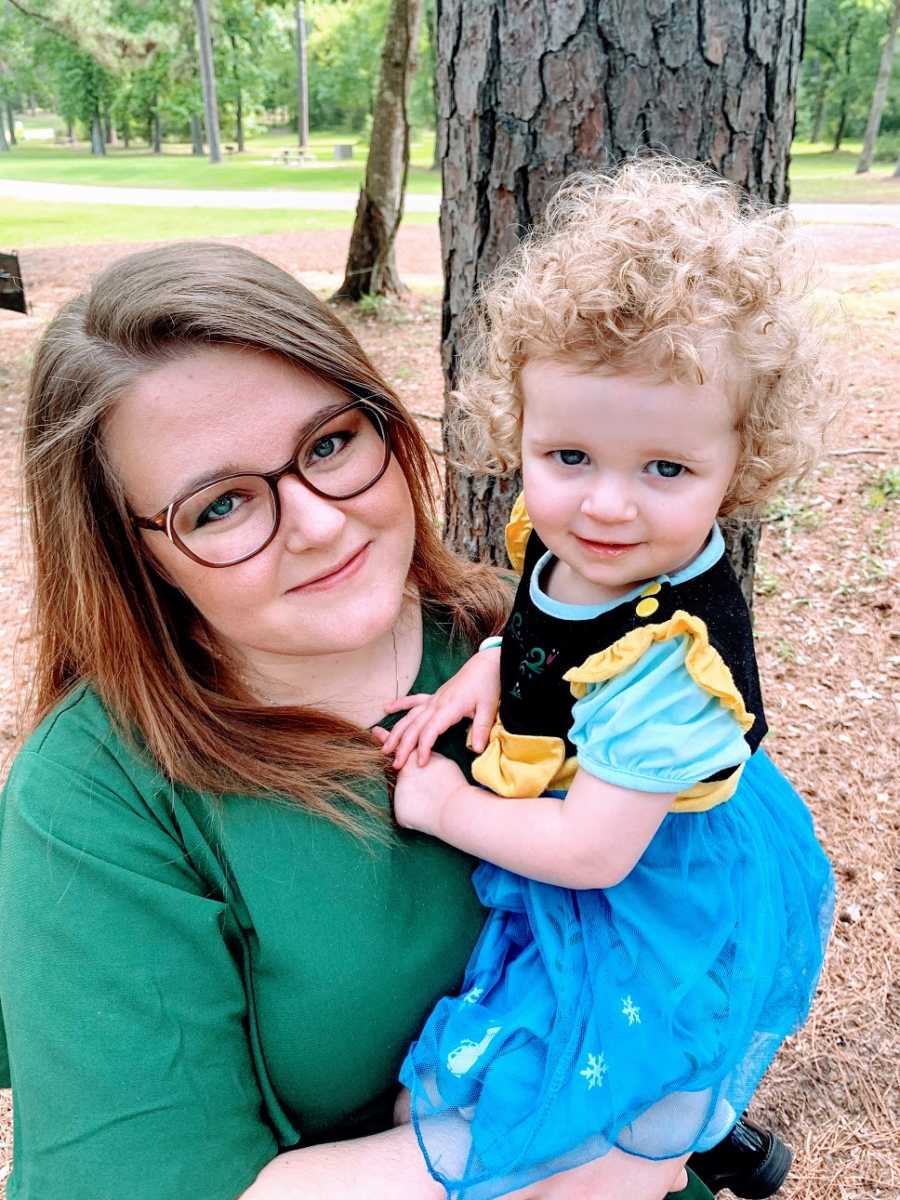
I told myself I needed to be strong for my girls. With every seizure, I began to practice calmly explaining to Aurie what was happening and what we needed to do. I realized Aurie wanted to help. I had the idea to give her a job anytime Andie had a seizure. ‘Aurie, will you get a pillow for Andie?’ And off she would run to get something for her sister. Often she would go back to get her sister a blanket and little stuffed animal too.
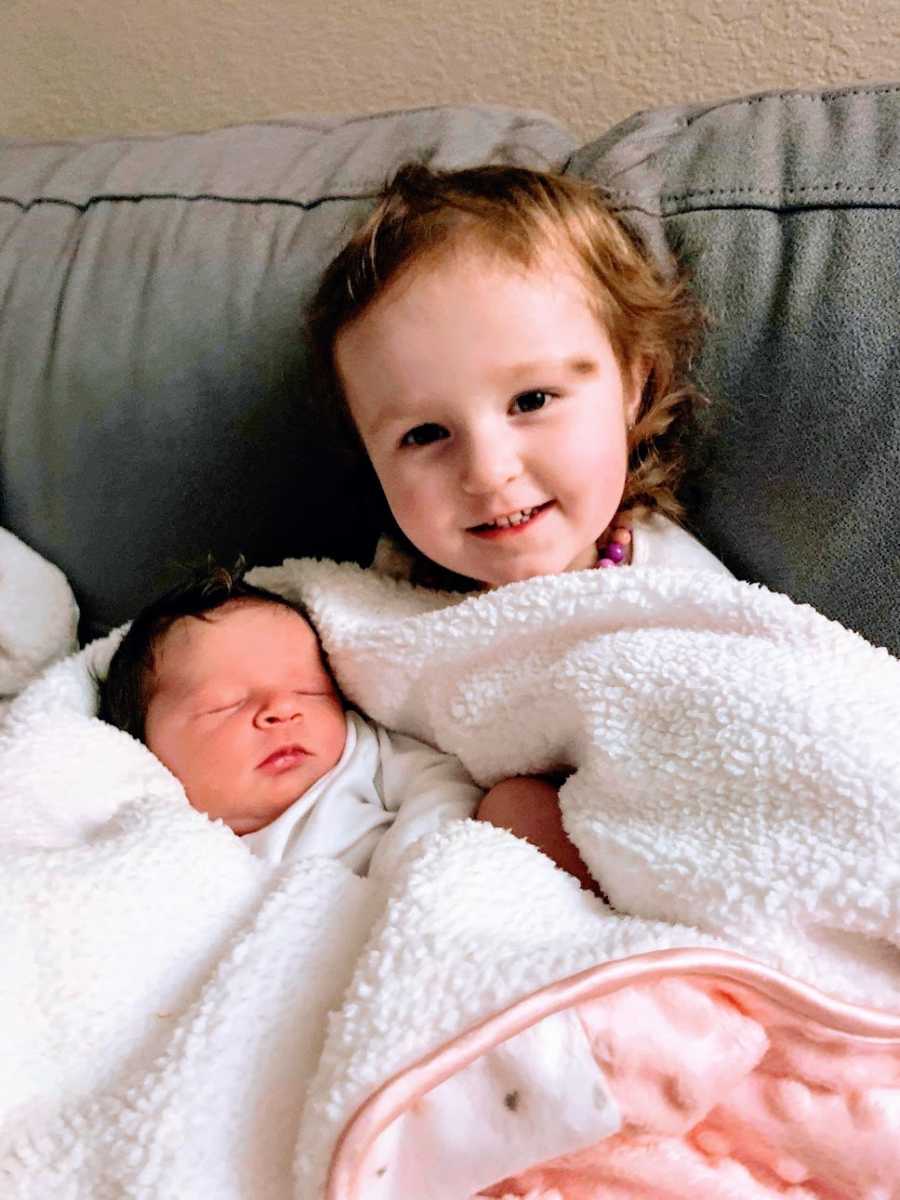
I’ve also created a safe space for Aurie to be during one of Andie’s seizures in case she doesn’t want to see or help. Having little talks before a seizure has happened really helps.
The past year has been heartbreaking and impossible to describe. Our calendar has been dominated by doctors’ appointments and therapy sessions for Andie: to help her walk, eat, communicate, sleep, and find ways to manage her seizures.
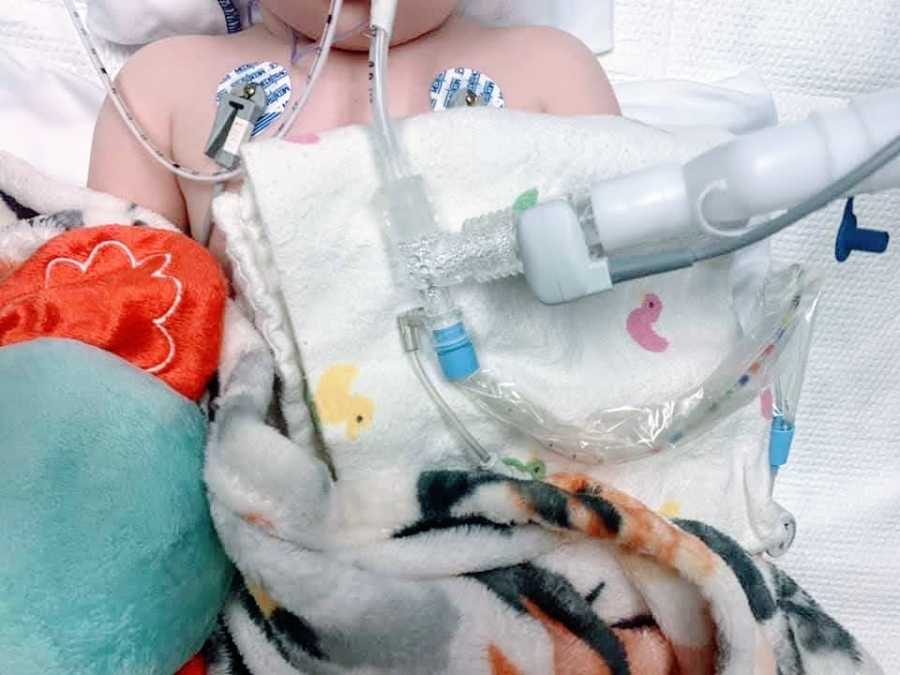
Andie was diagnosed in the middle of a pandemic. No one besides my husband and I have been allowed to visit her in the hospital and see just how scary her seizures can be. We are often separated from our oldest daughter, Aurie.
She was only 3 years old when her sister had her first seizure. In the sweetest toddler voice, she would ask me, ‘Why Andie have seizures?’ If you’ve met any small child, you would know that they relentlessly ask ‘why’ until they are satisfied with your answer.
Seeing her so worried over her sister drove me to find a picture book that could explain epilepsy and seizures. There aren’t many books out there made for children that talked about epilepsy. The ones I had found were lengthy, and it was difficult to keep my daughter’s attention. They seemed to be written for older children.
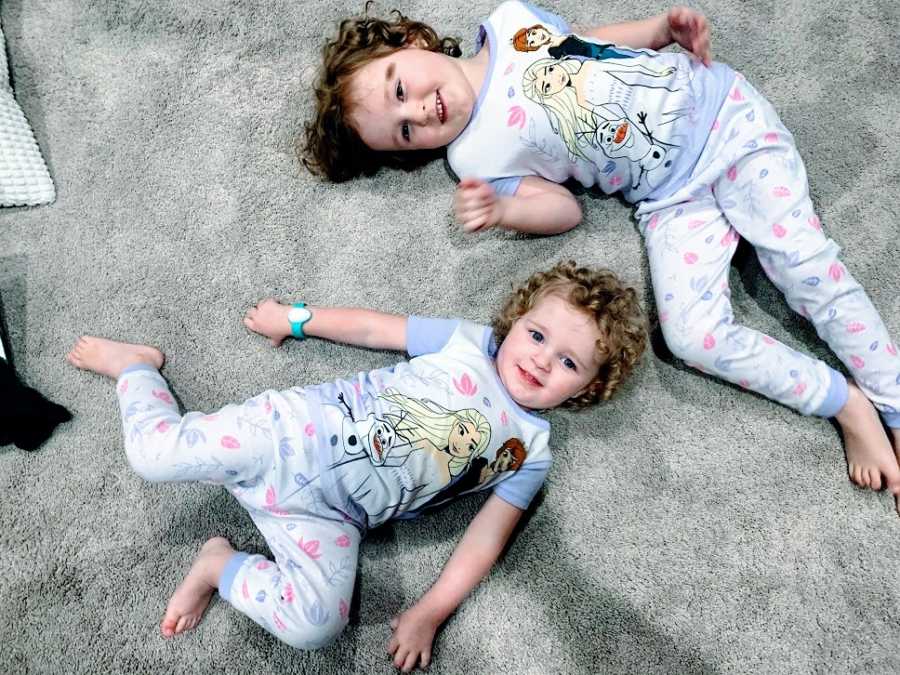
I turned to the online community to expand my search. I learned I wasn’t the only one having a hard time finding epilepsy books simple enough for a preschooler. It was then I realized I should write the book myself!
For the next 7 months, I worked hard writing and illustrating my own children’s book. I spent hours researching publication and learning how to illustrate. I watched hundreds of tutorials and went through more than two dozen revisions. I was inspired by my girls. They were the reason I was doing it in the first place.
I focused on Aurie’s questions and decided to write about what seizures are, what causes them, and what we can do to help when we see one. I wanted it to be simple. I wanted it to rhyme. I wanted it to keep the attention of small children, and I wanted it to answer all their questions.
Now I am the author and illustrator of Andie and the Storm: A Book About Epilepsy. It is short and sweet and is fun to read aloud with cute rhymes. The picture book features my beautiful children, Aurie and Andie. The illustrations are as simple as the explanations. The illustration style is linework and can be easily customized by the children and made one-of-a-kind with their own coloring.
I was excited and so proud when the book was finally published. I couldn’t wait to show the girls! They both have a love of books and the look of pure delight seeing a cartoon version of themselves on the cover of a book was priceless.
I’m so lucky I captured Aurie’s reaction to seeing the book for the first time. After exclamations of delight, Aurie said, ‘So cute! Read it to me!’ Followed by, ‘It’s so awesome! Look! Andie and the Storm!’ You can find her reaction video on Andie’s Facebook page.
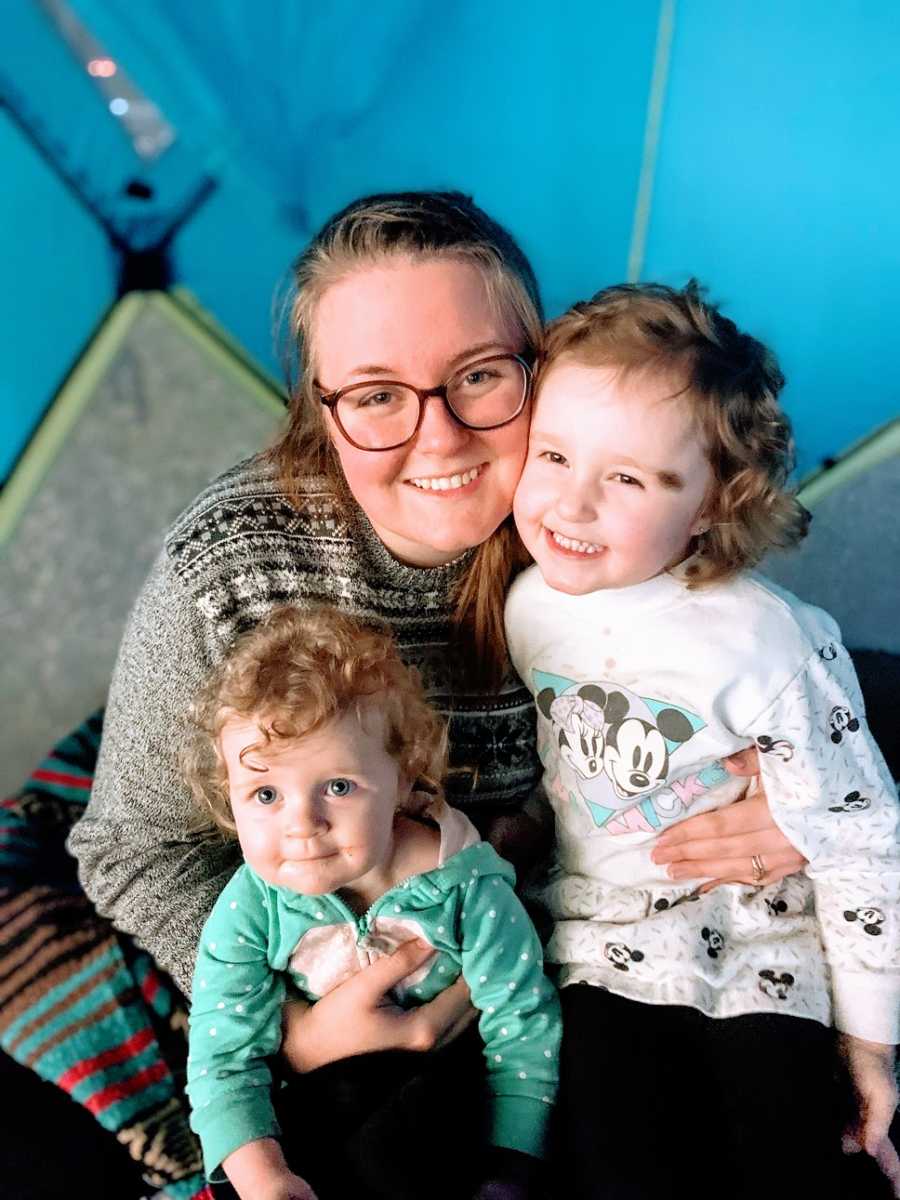
We have read it every night since it was published, and if anyone ever asks what a seizure is, Aurie is quick to reply it is like a storm. I love seeing my daughter confident and eager to share what she knows with her young friends.
In the midst of all the chaos, we have found so many silver linings. We have developed deep, meaningful friendships. We have seen a more beautiful side of humanity with the efforts of our friends and community to help our family and ease our burdens. There have been individuals we have never met in person who have generously given their time, supported us, and blessed our family. We have seen an outpouring of love and support from our local community and we couldn’t be more grateful.
Andie has kept up with her peers with the help of physical and occupational therapy. She gets extra help with walking and eating. We are working on getting her an AFO brace to help correct her slight gait.
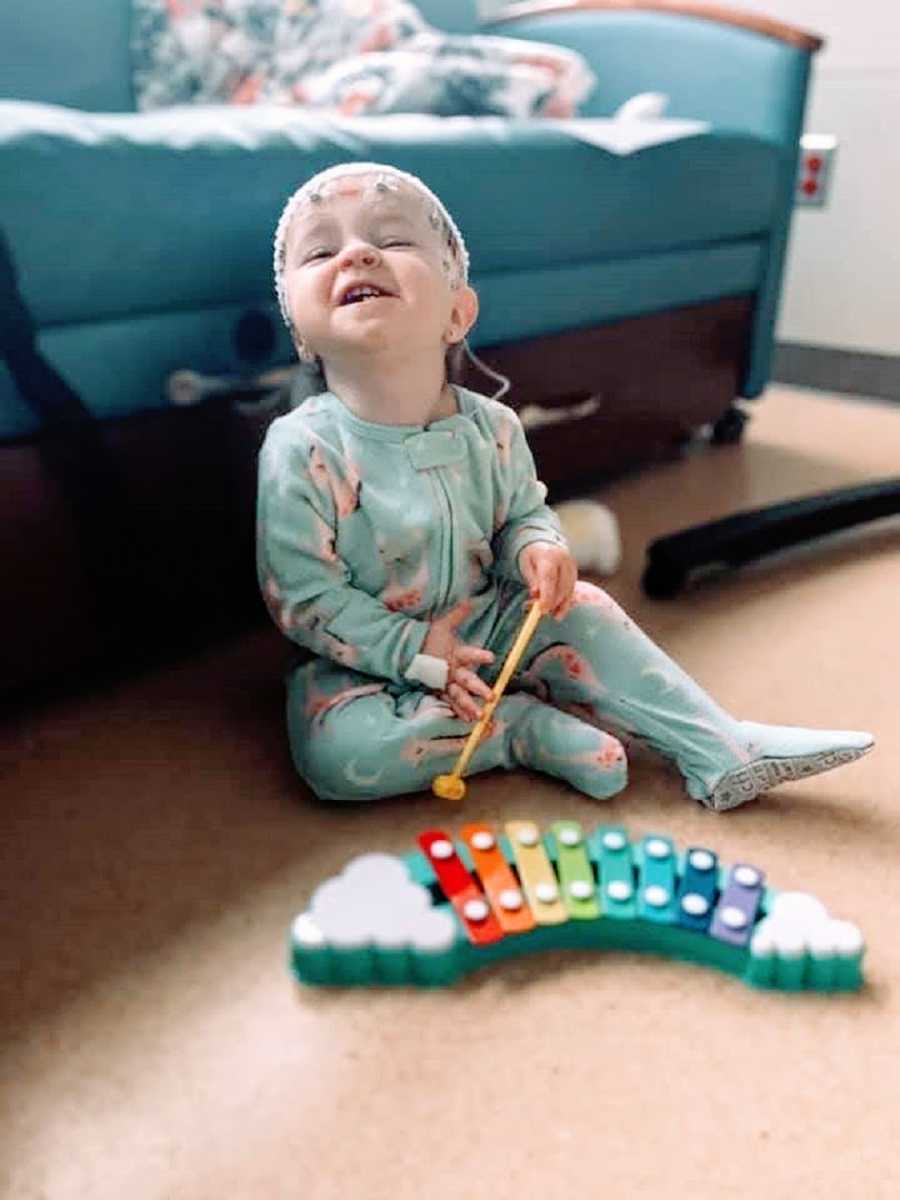
Andie sees many specialists, including her pediatrician, cardiologist, somnologist, and neurologist. In an effort to control her seizures, she takes several daily medications. It has been difficult to give so much medicine to a small child. She usually fights it. It has also been difficult to find medications that work. Andie has already failed several medications.
Despite all this, we have a lot of hope! There are many new medications becoming available for children with Dravet Syndrome and many new therapies on the horizon! We hope that someday there will be a cure for Dravet.
I hope Andie’s resilience inspires others. I hope families affected by epilepsy know they are not alone. If I’ve learned anything this past year, it is this: life is fragile. Don’t let fear and uncertainty paralyze you. There is nothing better you can do than be present and make the most of what you have right in front of you.”
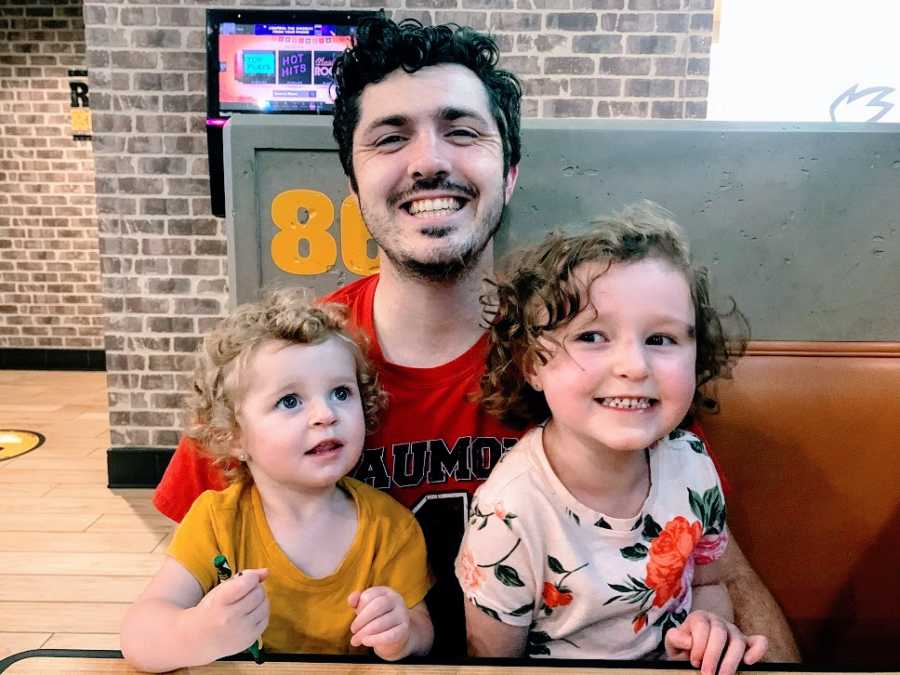
This story was submitted to Love What Matters by Lexie Griffiths of Magnolia, Texas, author of Andie and the Storm: A Book About Epilepsy. You can follow her journey on Facebook. Submit your own story here, and be sure to subscribe to our free email newsletter for our best stories.
Read more stories like this:
Provide hope for someone struggling. SHARE this story on Facebook with family and friends.

